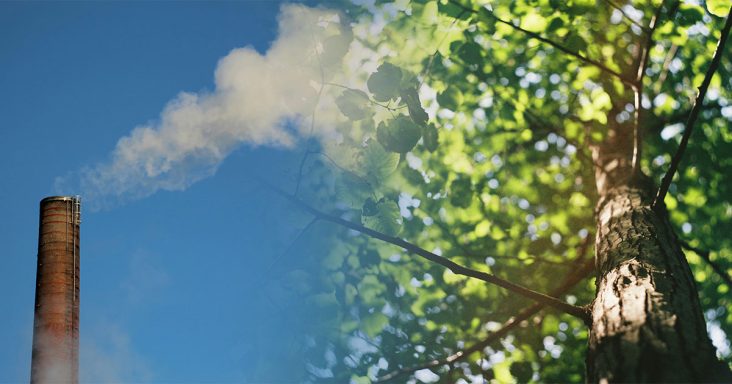Carbon credits potential revenue source for farmers
by June 19, 2024 2:42 pm 178 views

Many companies are trying to become more eco-friendly, but their service or manufacturing activities still produce a lot of carbon. In many cases, these companies cannot reduce their own carbon footprint, or it would be costly to do so.
One option is to buy carbon credits or carbon offsets. Credits are produced when another reduces its carbon footprint and then sells the results to a third party, which then sells them to a company looking to reduce its footprint.
The agriculture sector is one where carbon reduction is possible but can be costly.
Getting paid to sequester carbon in farm fields may sound like an attractive revenue stream, but Rusty Rumley said farmers need to examine the contract carefully to determine how much they’ll actually net.
Rumley, a senior staff attorney for the National Agricultural Law Center, has seen many of these contracts. The contacts offered to farmers can promise, on average, $15-$20 per ton of sequestered carbon, but they also come with stipulations governing what techniques a farmer can use and for how long. He also noted that European farmers generally get paid more for their sequestering efforts than their American counterparts.
“For row crop farming, I’ve seen these contract lengths range from two years up to 100 years,” he said. “With the 100 year one, they will pay you for the first five years, then after that, you’re expected to keep the land as was specified in the contract.”
Rumley said the big question is, “Is it economically viable to even sign a contract?”
“Many of the contracts — outside of forestry — do not pay enough to make it worthwhile,” he said. “You’ve really got to sit down and put pencil to paper.”
For example, a contract might require the farmer to use cover crops and will pay the farmer $3 an acre.
“I’m not good at math, but the cost of seed for the cover crop, the cost of diesel, wear and tear on the tractor, it’s already costing more than $3 an acre,” Rumley said. “So, you’re starting out in the hole.”
However, if the farmer was planning to go with cover crops or no- or low-till anyway, the “$3 an acre is going to offset the cost somewhat, but you’re not going to make money on it,” Rumley said.
How do companies estimate the amount of carbon your farm will sequester?
“That’s the million-dollar question,” Rumley said. “They can estimate carbon for timber pretty quickly because the tree is the biggest carbon sink. When it comes to soil, that’s where everyone disagrees.
“These companies have different methodologies for measuring carbon, and different soils have different holding capacities,” he said. “That’s the black box in the contract.”
Rumley said the contracts favor the company when determining how to measure the carbon sequestered.
“In almost all of these contracts, there will be language saying, ‘it’s completely up to us,’” Rumley said. “The company will tell you how much carbon you have sequestered and that they can change their methodologies at any time, and you have no say in that.”
Some companies will require farmers to give their representatives the right to come onto the farm, take hundreds of soil samples to determine a baseline for carbon, and then come back periodically to conduct additional measurements.
Before signing any carbon credit contract, farmers need to read it carefully, have an attorney review it, and decide whether the terms will be profitable.
Rumley said no single entity currently regulates the carbon trading industry.
Other pressures that would shape a contract include the entity buying the carbon credits, especially if the company has publicly announced its efforts to be “net zero” or makes other claims of carbon-related sustainability.
“Does the company buying think these carbon credits are ‘valid enough’? Rumley asked. “Is the Federal Communications Commission going to come back against the company buying the carbon credits and say your carbon claims are false advertising?”
The National Agricultural Law Center has resources online for farmers and attorneys on the topic of carbon contracts.
The January 2023 Purdue/CME Group Ag Economy Barometer found that 9% of its survey respondents had discussed a carbon contract with a company, up from 7% during the first quarter of 2021. However, “just 1% of survey respondents in January reported that they had signed a contract,” the report said. Carbon credits aren’t a new topic. Changes to the Clean Air Act in 1977 opened the way to the first emissions trading mechanism. More changes came in 1990, with the establishment of the Acid Rain Trading Program. The Kyoto Protocol of 1997 expanded the idea of global carbon emissions trading.
In February, the U.S. Department of Agriculture announced the Greenhouse Gas Technical Assistance Provider and Third-Party Verifier Program, which facilitates farmer, rancher and private forest landowner participation in voluntary carbon markets.
“Farmers, ranchers, and forest landowners are part of the solution to climate change, and they need trusted information to navigate emerging carbon market options,” said Agriculture Secretary Tom Vilsack. “This new program will provide resources for producers and landowners, helping them pursue opportunities to generate revenue while benefiting the environment. It also builds on USDA’s comprehensive approach to create value and multiple income streams for all producers and communities, including through innovative, climate-smart agricultural practices.”
In 2021, the Environmental Protection Agency determined that 10.6% of greenhouse gases are emitted by farm activity. The emissions included nitrous oxide from fertilizer application, manure storage and management, and methane from animal digestive processes. A report from the National Academies of Sciences, Engineering and Medicine said that agriculture could sequester the equivalent of 4% of U.S. carbon dioxide emissions.
